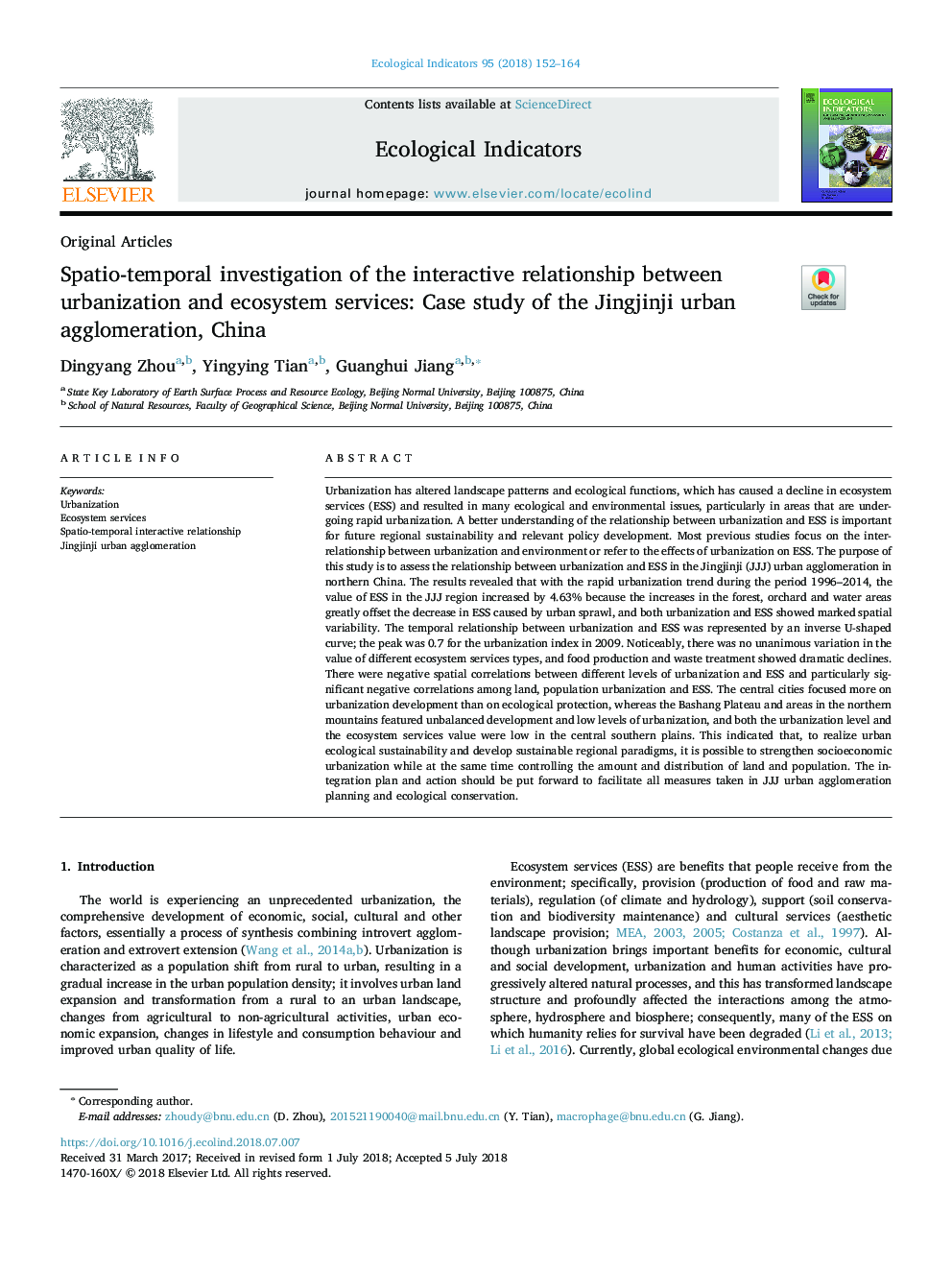| Article ID | Journal | Published Year | Pages | File Type |
|---|---|---|---|---|
| 8844931 | Ecological Indicators | 2018 | 13 Pages |
Abstract
Urbanization has altered landscape patterns and ecological functions, which has caused a decline in ecosystem services (ESS) and resulted in many ecological and environmental issues, particularly in areas that are undergoing rapid urbanization. A better understanding of the relationship between urbanization and ESS is important for future regional sustainability and relevant policy development. Most previous studies focus on the interrelationship between urbanization and environment or refer to the effects of urbanization on ESS. The purpose of this study is to assess the relationship between urbanization and ESS in the Jingjinji (JJJ) urban agglomeration in northern China. The results revealed that with the rapid urbanization trend during the period 1996-2014, the value of ESS in the JJJ region increased by 4.63% because the increases in the forest, orchard and water areas greatly offset the decrease in ESS caused by urban sprawl, and both urbanization and ESS showed marked spatial variability. The temporal relationship between urbanization and ESS was represented by an inverse U-shaped curve; the peak was 0.7 for the urbanization index in 2009. Noticeably, there was no unanimous variation in the value of different ecosystem services types, and food production and waste treatment showed dramatic declines. There were negative spatial correlations between different levels of urbanization and ESS and particularly significant negative correlations among land, population urbanization and ESS. The central cities focused more on urbanization development than on ecological protection, whereas the Bashang Plateau and areas in the northern mountains featured unbalanced development and low levels of urbanization, and both the urbanization level and the ecosystem services value were low in the central southern plains. This indicated that, to realize urban ecological sustainability and develop sustainable regional paradigms, it is possible to strengthen socioeconomic urbanization while at the same time controlling the amount and distribution of land and population. The integration plan and action should be put forward to facilitate all measures taken in JJJ urban agglomeration planning and ecological conservation.
Keywords
Related Topics
Life Sciences
Agricultural and Biological Sciences
Ecology, Evolution, Behavior and Systematics
Authors
Dingyang Zhou, Yingying Tian, Guanghui Jiang,
